Little brown bugs in the apartment: how to get rid of them
Among all the parasites occupying the human home, small brown bugs in the apartment are considered one of the most harmful. They are able to spoil the life of its inhabitants. These insects are almost omnivorous and breed very quickly. They consume plant and animal foods, fabrics, fur, old paper and more. Getting rid of these pests can be extremely difficult.
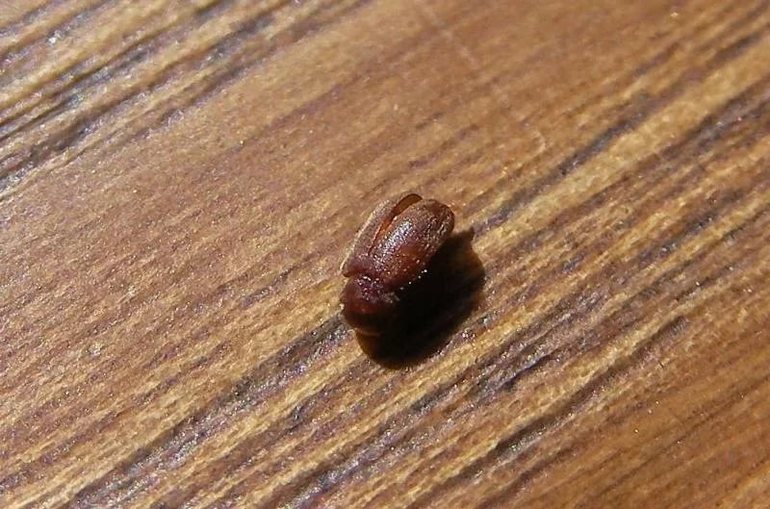
general description
A small brown bug in the apartment is called a leather-eater. The genus of these insects has more than 600 species. In natural conditions, they play the role of natural orderlies, destroying the remains of animals and plant debris. But, having settled in human dwellings, they immediately become dangerous pests.
Leather-eaters are small flying bugs ranging in size from 1.3 to 13 mm. They have convex oval bodies of brown, gray and black color, sometimes with light, green and red stripes. Their abdomens are almost flat. Under some hard elytra, some species have true wings. Elytra sometimes covered with small scales or long hairs.
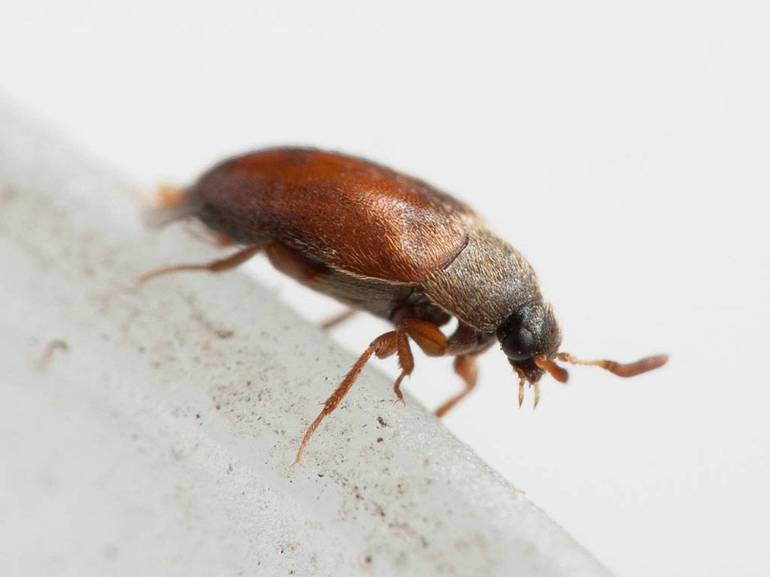
The range of the skin-eater is very wide. They live everywhere, except in cold zones and areas with high humidity. Especially many of these insects in the summer in the dry steppes, deserts and semi-deserts, but they are not found in the tundra and in the humid jungle of South America. In the middle climatic zone, skin-eaters are rare.
In apartments where the air is humid, skin-eaters settle reluctantly. They love warmth and dryness. Pests prefer places with dry and even dry air, so they can often be found near a central heating battery.
The insect breeding cycle is one year. In the southern regions there are species that give offspring twice a year. In some species, the caterpillar develops over several years. After emergence from the egg, the larva molts up to 8 times. The pupa develops very rapidly, from 4 to 20 days, depending on the living conditions.
Appearance in the apartment
Small brown bugs can fly into the room through windows and doors. Most often they are found on window sills in the kitchen, where they lay eggs on the underside. This is explained by the favorable conditions there for breeding larvae, especially near batteries.
Bugs quickly spread throughout the housing area and easily hide due to masking color. Under suitable conditions, they multiply intensively. Females lay a translucent white grain the size of a grain of sand within 2-10 days, after which they die. After 3 weeks, hairy red caterpillars come out of the eggs, which actively feed. Their food is:
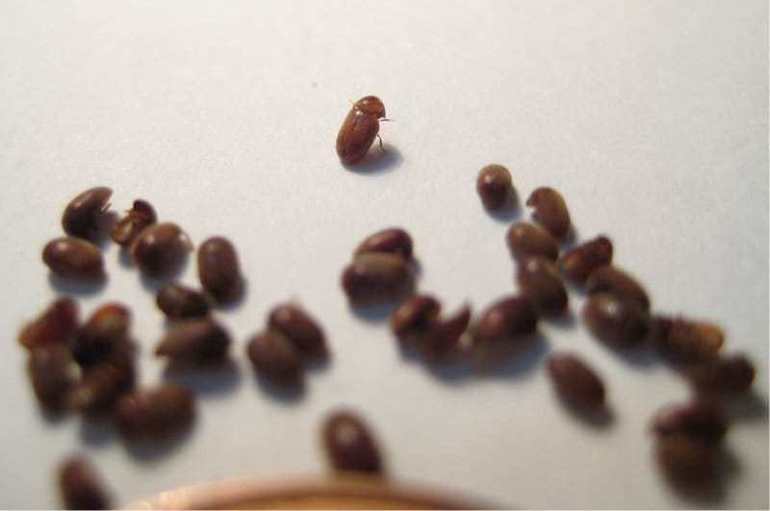
- cereals;
- pasta;
- cheese;
- meat;
- dried fish;
- fur;
- pen;
- natural fabrics;
- stuffed animals and other organics.
Leather-eaters can wind up under the wallpaper and eat wallpaper glue there. Larvae can also be found in carpets, where they eat wool, dust and organic debris.
Often, bugs fly into apartments due to the following external factors:
- cooling or increased humidity;
- reduction in the amount of natural food.
Often, skin-eaters crawl in certain places. Their appearance is provoked by the following reasons:
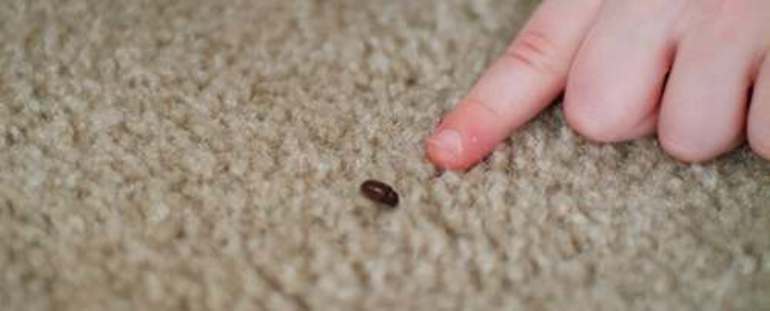
- dry and warm indoor;
- stuffed animals and birds installed there;
- insect collections;
- old books in libraries;
- furry animals living in the house, especially long-haired;
- a large number of fur and leather clothes;
- neglect of preventive measures against insect pests.
Pests not only jump into houses through open windows and doors. Their distribution paths are as follows:
- ventilation ducts;
- items and products brought from the store that were infected by skin-eaters;
- larvae clinging to animal hair during a walk.
Common species
The skin-eaters living in houses are divided into several classes. They are as follows:
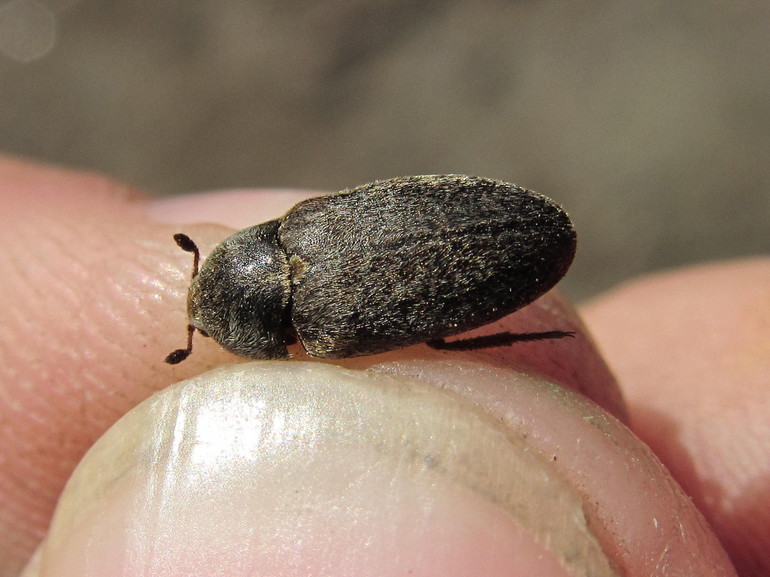
- Ham - the most common variety of pests. Kozheedy eat almost everything, from organics to wood chips. Usually they prefer meat and fish. These are dark, almost black long bugs, reaching a size of 1 centimeter.
- Fur coats are black oblong beetles with large white dots on the elytra. They are bred in dust accumulations, where they feed on organic residues. Their length reaches 4-6 mm.
- Carpet - these insects live in products, skin, fur, feather pillows. They are brown in size up to 5 mm.
- Cereals - tiny round insects up to 3 mm long. They are bred in cereals, grains, nuts, pasta.
- Spotted - these skin-eaters, along with ham, are among the most dangerous species. They eat meat, fish, skin, fur. Their length ranges from 5 to 10 millimeters. Often, according to the larvae of the insect, the forensics determine the prescription of the corpse.
Leather-eaters can be found in various household items: furniture, leather products, fabrics, books, and in many other places. They eat not only organic materials, but also synthetics. There are cases when these strange pests gnawed cardboard, rubber, asbestos and cable sheath. Often they are bred in domestic plants.
Despite extreme gluttony, skin-eaters can do without food for up to 5 years. Their biological processes slow down, but viability is maintained.
Danger to people
Kozheedy not only spoil the products in the house, but also bite the people living there. Their bites are quite painful and dangerous for humans. At the damaged site, redness may turn into inflammation. Pathogenic bacteria can enter the wound, causing it to fester. The danger of a bite also consists in the following:
- the appearance of allergic reactions in people prone to them;
- infection with helminths and pathogenic bacteria.
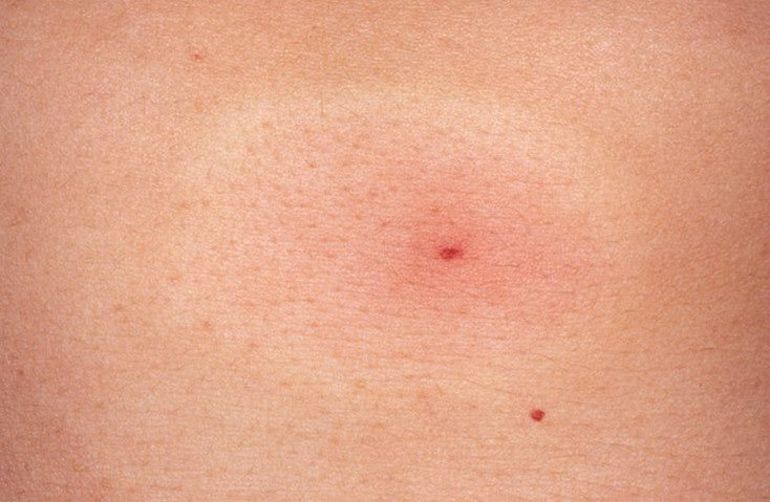
Doctors recommend treating the affected area with a disinfectant to prevent the inflammatory process. Especially unpleasant when bugs get divorced in bed in feather pillows or feather-beds. In this case, the danger of a bite increases many times.
Getting rid of parasites
In order to effectively deal with uninvited neighbors, you need to find out where they come from in the house and in what place they managed to get a divorce. The first is difficult to find out, since the bugs could fly into or crawl through a window, door or air vent. Also, parasites could get from the street on clothes and animal hair, they could be brought along with purchased furniture, collected plants and mushrooms.
The location of insects is easier to find. This usually happens:
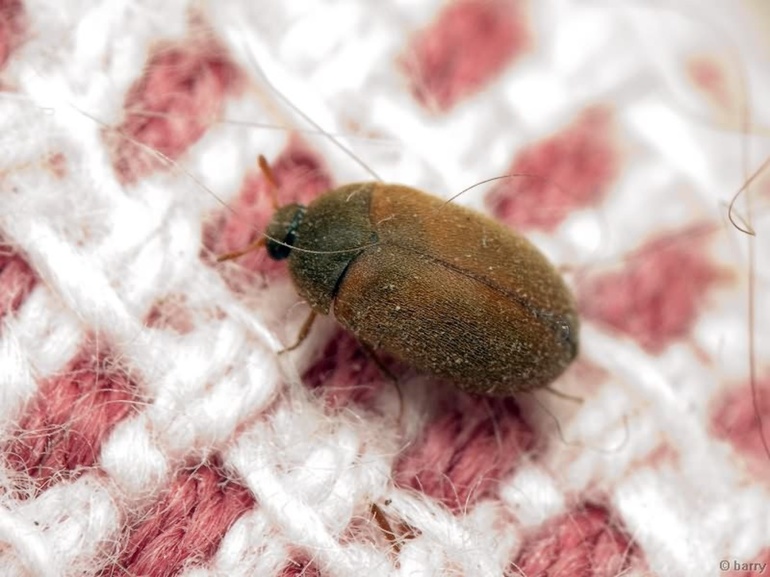
- carpets and rugs;
- the lower part of window sills, especially if they are not plastic, but wooden;
- space behind the radiators;
- places behind skirting boards and door platbands;
- places under the wallpaper, especially at the joints and the bottom;
- food products;
- beds, sofas, upholstery on upholstered furniture.
All these places must be carefully checked. To get rid of parasites, you need to know their features:
- Insect larvae cannot stand bright light; they live in the dark.
- Adults are daytime insects that fly in the sunlight. Sometimes they appear in apartment lighting.
- Skin tanners of any kind cannot tolerate high humidity and low temperatures.
Methods of struggle
There are various ways to deal with skin-eaters.. The following measures help against pests:

- Thorough cleaning in the habitats of bugs and their larvae. Collected insects are destroyed.
- Freezing the room. Bugs are not able to tolerate temperatures below -11 ºС for more than 3 hours. This method is not suitable for urban apartments, but it can be used in a rural house.
- Processing furniture, feather-stuffed items, and fur clothes with a steam generator. With its help, they destroy bugs, larvae and eggs. Contaminated cotton clothes are simply boiled.
- Throwing away old things and furniture. This is the most radical way to deal with skin-eaters.
Contaminated areas are sprinkled with boric acid. This tool helps to remove many parasites, including skin-eaters. To combat bugs, chemical moth powders and aerosols are also used:
- "Antimol";
- Raptor
- "Raid";
- "Clean House" and others.
It should be noted that these drugs are addictive in insects, so they need to be changed regularly.
Small brown bugs in the apartment do a lot of harm: they spoil food and things, can bite badly. To get rid of them, you need to show patience and perseverance.
- How to choose a vacuum cleaner taking into account the characteristics of the house and coatings?
- What to look for when choosing a water delivery
- How to quickly create comfort at home - tips for housewives
- How to choose the perfect TV - useful tips
- What to look for when choosing blinds
- What should be running shoes?
- What useful things can you buy in a hardware store
- Iphone 11 pro max review
- Than iPhone is better than Android smartphones



